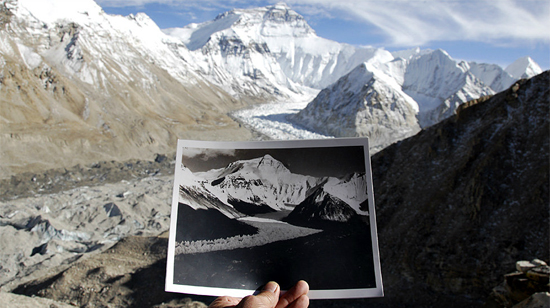Art serves various purposes, ranging from aesthetics, to therapeutic uses, to avenues for making powerful statements – including meaningful contributions to the conversation on climate change and climate advocacy. Here’s how some museums around the world are partnering with artists to use their voice surrounding climate advocacy through installations of art and technology.
Theatre Futures: Data and Strategy
The 2022 Theatre Communications Group conference offered virtual, hybrid, and in-person experiences. Hosted in Pittsburgh, the conference adeptly revealed the opportunities and challenges facing the field as theatre artists and institutions navigate their futures. The following summary offers two core takeaways from the conference, focusing on a theatre administration future of human-centered strategies allowing adaptive innovation within a constantly changing ecosystem.
The Impact of Emerging Sustainable Practices in the Film Industry
Sustainability is important to every industry, especially film, as each production (with an average $70 million budget) produces a carbon footprint of 3,370 metric tons. TV and film productions create an abundance of carbon emissions, significantly affecting the atmosphere. However, carbon emissions are not the only aspect of sustainability the film industry must focus on. Sustainable Development Goals (SDGs) provided by the United Nations (UN) show that practicing sustainability involves much more than climate change. While the film industry is making many strides towards greener productions, there are many issues that have yet to be addressed. Such issues include livable wages (SDG 8), gender equality (SDG 5), and responsible production and consumption (SDG 12). These are a few of the most prevalent ways that the film industry can follow the path of sustainability per the UN guidelines.
GlacierWorks: A Detailed Look at Climate Change
‘The glaciers are melting’ is a phrase that we have heard and read, in all its literary permutations and combinations, ad infinitum. And the term “ad infinitum” should raise concern among us because when certain phrases are repeated so often, when they are so widespread, the world becomes inured to them. Ironically, despite of the size and scale of most glaciers, many of us have probably never encountered these sublime bodies of ice. So when we hear about the plight of our glaciers, we shrug and give a slight brrr of concern, for we are not acclimated to contemplate the cold beyonds of planet earth.
But what if we could visualize our glaciers at different points in time? What if we could see how much they have changed over the past century? Would we finally comprehend the glacial magnitude and urgency of climate change? GlacierWorks certainly thinks so.
“GlacierWorks is a non-profit organization that uses art, science, and adventure to raise public awareness about the consequences of climate change in the Greater Himalaya. By comparing our modern high-resolution imagery with archival photographs taken over the past century, we seek to highlight glacial loss and the potential for a greatly diminished water supply throughout Asia.”
The GlacierWorks team, which is led by “filmmaker, mountaineer, and adventurer”, David Breashears, re-traces the photographic and mountainous footprints of early 19th and 20th century photographers, each of whom dared to explore the Himalayan terrain during the course of their lives.
Among these early pioneers is the famous 19th century Italian mountaineer and photographer, Vittorio Sella, who is best known for his breathtaking images of the mountainous landscapes in Europe, Asia, Africa, and America. Whilst in India, Sella took a series of “awe-inspiring images of the Jannu and Kangchenjunga Glaciers, as well as the Karakoram’s Lower Baltoro Glacier.”
Another eminent photographer, whose images are traced by GlacierWorks, is Sir Edward Oliver Wheeler who was the Surveyor-General of British India from 1941 to 1947, and was knighted as a result of his notable work in topography for the Indian subcontinent. Other noteworthy photographers of Mount Everest and its surrounding terrain include German filmmaker, Norman Günter Dyhrenfurth, and George Herbert Leigh Mallory, who was a member of the 1921 British Reconnaissance Expedition, which “explored routes on Mount Everest and produced the first accurate maps of the region.”
In order to provide us with a compelling difference between the masses of our glaciers today as opposed to just a century ago, the GlacierWorks team determines the photographic point or location from where each of the images by Vittorio Sella or Sir Edward Oliver Wheeler were taken. As such, we are able to make a glance-by-glance comparison of the Himalayan glaciers through two images taken from the exact location, but with a century’s worth of time in between them. This visual comparison is sublime, even melancholic, but the overarching message is grim, for these images provide us with the cold, icy truth about our glaciers; not only are they melting, but they are doing so at a devastatingly alarming rate.
On their website, we are encouraged to do some virtual mountaineering of our own so that we may become familiar with the majestic but eternally distant Himalayan glaciers. In collaboration with xRex studio, “a visual effects practice which explores the intersection of high-end computer graphics and advances in digital photography”, GlacierWorks has created incredible 180 and 360 degree immersive explorations that re-create the awesome entirety of the Himalayan landscape, all in gigapixel imagery.
And with the use of gigapixel imagery, GlacierWorks has accomplished an uncanny yet astonishing feat: they have placed before our very eyes, the detailed truth on glacial loss; and they have made us confront, the absolute reality about the future our glaciers. GlacierWorks’ photographs incite a sense of loss and the necessity to change our profligate ways, before all that remains is a set of high resolution imagery, before the comparison between the glaciers of the past and those of the present is beyond discernment.
The 2011 UN Climate Change Conference will take place in Durban later this month. Here’s hoping they agree on at least a few environmental measures because inconclusive climate summits is something we have heard and read about ad infinitum.










